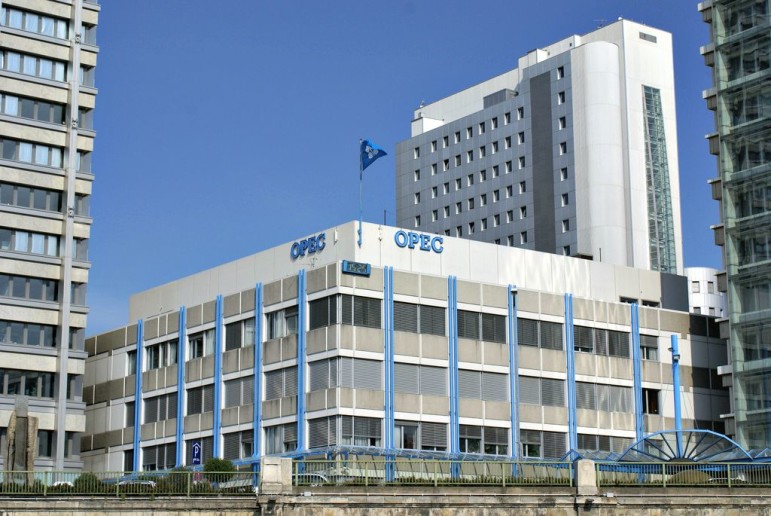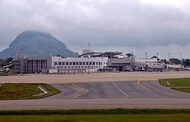Low oil prices might be the theme of today, but the opposite storyline could be just up on the horizon.
OPEC made its position abundantly clear — it won’t reduce its output to artificially increase oil prices unless it’s joined by other oil-producing nations. That’s because it wants to maintain, if not increase, its control of the oil market. And it’s willing to suffer through the short-term consequences of weak prices to be in the position to capture the long-term gain it sees up ahead.
That said, it’s growing more worried that future oil prices could really skyrocket because of the growing potential for the current supply-demand imbalance to flip from oversupply to significant shortfall.
Crunching the numbers
This past week, Saudi Arabian oil minister Ali al-Naomi said something quite starling about what the lack of investment in the industry could do to future supplies:
“There is a big drop in the production capacity of oil wells across the world, estimated around 4 million barrels a day, which means the petroleum industry needs new additional production capacity of around 5 million barrels a day every year … to meet the global demand.”
What he’s pointing out is that oil wells naturally drain over time, leading to lower production volumes and the need to continually replace depleted wells. This situation costs the industry hundreds of billions of dollars each year. However, because of the significant drop in oil prices over the past year, producers have cut investment in new oil projects, especially those that won’t produce oil for a few years. This situation is leading to a growing concern that declining production won’t be replaced in time to meet future demand, which is growing by a million barrels each year.
The $200 billion hole
The investment reduction has been quite stunning, with well-respected oil-industry research firm Wood Mackenzie projecting that the industry has deferred over 45 major projects since oil prices turned south, representing $200 billion of investment. About half of these projects were deepwater projects, and another 30% were in the Canadian oil sands. Many of these projects would have started producing toward the back half of this decade but now are unlikely to deliver first oil until the 2019 to 2023 timeframe, and that’s only if producers give the green light to start construction next year, which is becoming increasingly unlikely.
In the oil sands, for example, a joint venture between ConocoPhillips (NYSE:COP) andCevovus Energy (NYSE:CVE) has deferred several expansion phases. The duo, which had completed 11 phased expansions at their Foster Creek and Christina Lake projects — which drove 23% compound annual production growth from this oil-sands venture — deferred future phases of expansion at those sites that weren’t already under construction. Further, the partners have also deferred the first phase of Narrows Lake, which alone represents 45,000 barrels a day of production. Because of this slowdown, Cenovus Energy no longer expects to achieve its target to grow oil production from its current rate of 200,000 to 500,000 barrels per day by 2021.

SOURCE: CENOVUS ENERGY.
Meanwhile, offshore development has been even harder hit by the downturn. BP‘s (NYSE:BP)Mad Dog 2 project is a prime example. It was initially commissioned in 2012 and was expected to deliver first oil in 2017. However, because of an escalation in costs to more than $10 billion, BP chose to defer the project in 2013 and rethink the commercial approach because the economics were challenged even at $100 crude. That said, even if BP approved the project before the end of this year, it wouldn’t deliver a drop of oil until 2020.
Mad Dog 2 is just one of several “shovel ready” offshore projects currently on hold. However, besides deferring projects, the industry is cutting back on a lot of exploration and appraisal drilling, which could put future supply growth at risk. ConocoPhillips, for example, has canceled its plans to explore for more oil in the Gulf of Mexico and has decided to scrap future deepwater exploration altogether. Many others have slowed drilling plans, since a discovery wouldn’t produce any cash flow for several years.
Investor takeaway
What’s vitally important to note is that these major project deferrals have no impact on the current oil glut, because these projects won’t produce a drop of oil for years. However, therein lies the concern, which is that in delaying, the industry could face a significant future oil shortfall because these new projects won’t be coming online in time to meet future demand.
This situation has OPEC somewhat worried, because a future super-spike in oil could cause global instability. Yet such a spike would be good for its wallet. That’s why it continues to sound the alarm while refraining from doing anything to solve the underlying problem caused by low prices. It continues to refuse to bear the brunt of a production cut needed to prop up prices and instead is hoping its dire warnings force its rivals to reduce their near-term output while continuing to invest to keep future global supplies flowing. It’s a delicate balancing act to say the least, and it hints at the potential for long-term investors in strong oil stocks to do very well.
Something big just happened
I don’t know about you, but I always pay attention when one of the best growth investors in the world gives me a stock tip. Motley Fool co-founder David Gardner (whose growth-stock newsletter was rated #1 in the world by The Wall Street Journal)* and his brother, Motley Fool CEO Tom Gardner, just revealed two brand new stock recommendations on Friday. Together, they’ve tripled the stock market’s return over 12+ years. And while timing isn’t everything, the history of Tom and David’s stock picks shows that it pays to get in early on their ideas.
Click here to be among the first people to hear about David and Tom’s newest stock recommendations.
*”Look Who’s on Top Now” appeared in The Wall Street Journal which references Hulbert’s rankings of the best performing stock picking newsletters over a 5-year period from 2008-2013.
Matt DiLallo owns shares of ConocoPhillips. The Motley Fool has no position in any of the stocks mentioned. Try any of our Foolish newsletter services free for 30 days. We Fools may not all hold the same opinions, but we all believe that considering a diverse range of insights makes us better investors. The Motley Fool has adisclosure policy.














